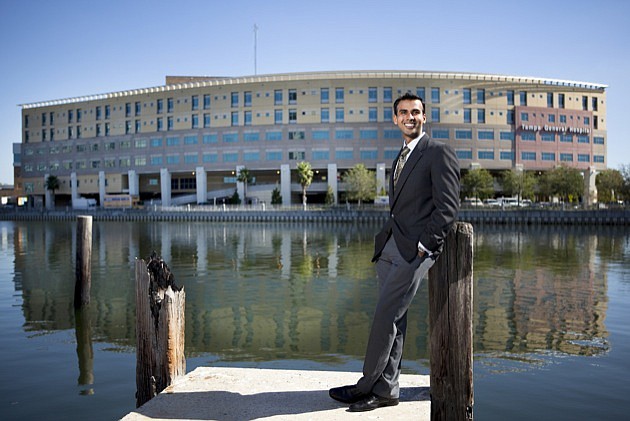A strong argument can be made that Balaji Ramadoss is the most important executive at Tampa General Hospital right now, especially during the process of converting paper medical records to electronic form and the security such a task entails.
But the least likely person to make that argument would be Ramadoss.
“Technology is only one piece of the solution,” says Ramadoss, who has been at TGH for the last three years and now serves as its chief technology officer. “The challenge is putting technology in the right magnitude so that care providers aren't distracted by anything else.”
In other words, his job is to build and design the right system for doctors and nurses to use in taking care of thousands of patients around the clock — without bogging them down in techie issues.
That means making everything easy to use and understand, as well as making sure everything is in compliance with government regulations, particularly the Health Insurance Portability and Accountability Act.
“I'm a tech architect,” he says humbly.
'Can-do attitude'
Those who nominated Ramadoss for the Tampa Bay Technology Forum's Rising Star award recognize his ability to engage the 5,000 TGH employees in making the best use of tech. He oversees more than 8,000 pieces of equipment, including desktop computers and handheld devices, and will take on more responsibility as the 950-bed hospital continues to grow.
“He has achieved diverse and significant accomplishments ... through his creativity, leadership, organization and mentoring skills,” says Leila Martini, assistant director of the University of South Florida Health Education Center. “He promotes a positive can-do attitude, but also stands for what he believes to be right.”
Ramadoss, a USF graduate, was promoted to his current position at TGH following the retirement of Ginger Oliver, senior vice president and chief information officer, who hired him to implement an IT security program at the hospital, including incorporating highly complex HIPAA security rules.
Oliver credits Ramadoss with taking the initiative to meet with various members of the IT profession in the Tampa Bay area to foster communication among colleagues and explore different kinds of technologies that would be beneficial in a hospital setting. Success and achievement are fundamental to his character, she says.
“He has led study groups and think tanks with the goal of the promotion and adaption of IT in various business settings,” Oliver says.
Learning from Katrina
Before he was hired at TGH, Ramadoss was called into action by the Centers for Disease Control shortly after Hurricane Katrina struck the Gulf Coast. He was assigned the task of implementing a disease surveillance system for numerous refugees who were sent to Houston from New Orleans and other affected areas.
The system, which adapted documentation into hand-held devices, “made it possible for Houston to assess all victims each day and contributed to significant decreases in mortality and morbidity associated with this disaster,” said Dr. Scott Lillibridge, assistant dean of the Texas A&M University Health Science Center. He was familiar with Ramadoss' prior work at USF in combining technology with health care and asked for his help specifically.
“It also contributed to the success in Houston where nearby New Orleans had failed in its efforts,” Lillibridge wrote in a recommendation letter. “This system has become the standard for refugee and emergency operations throughout the response community.”
Ramadoss says the Katrina experience impressed upon him the instant impact of technology, especially in emergency situations. He says he had only four hours to set up the triage system in Houston and put it into action immediately.
“What used to take hours with paper and pencil, we were able to do in real time,” Ramadoss says. “It was a very humbling experience on the power of what you can do with technology.”
He points out that technology has quickly moved from the back seat where medical applications are concerned to the forefront, particularly with the move toward electronic record keeping. Tech systems in hospitals are now becoming as essential as power, plumbing and all other infrastructure, he says.
While some patients worry about the security of electronic medical records, Ramadoss notes that many of those same issues have to be addressed with paper files. Both external and internal safeguards are being put into place to ensure no information winds up in the wrong hands, he says.
Furthermore, protocols are being used with electronic records to show exactly who accessed them and why, Ramadoss says. His Katrina experience has translated to the $45 million TGH record conversion project in the areas of laptop and email encryption and active directory migration.
In addition to his role at TGH, Ramadoss is also involved in the community, particularly through his role with the March of Dimes. He is also pursuing a doctorate in engineering at USF and is involved in research through the H. Lee Moffitt Cancer Center & Research Institute, located on the Tampa campus.






